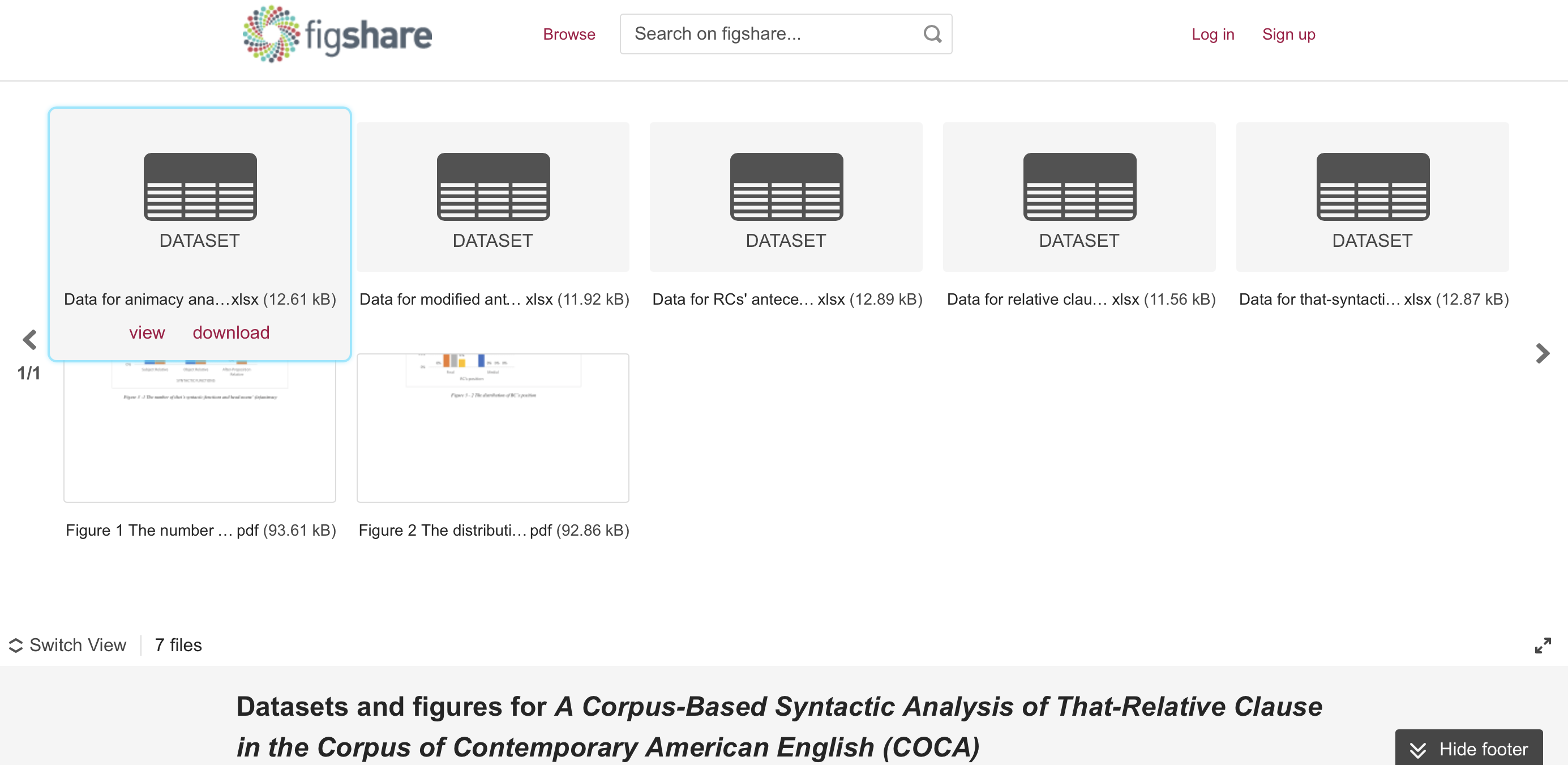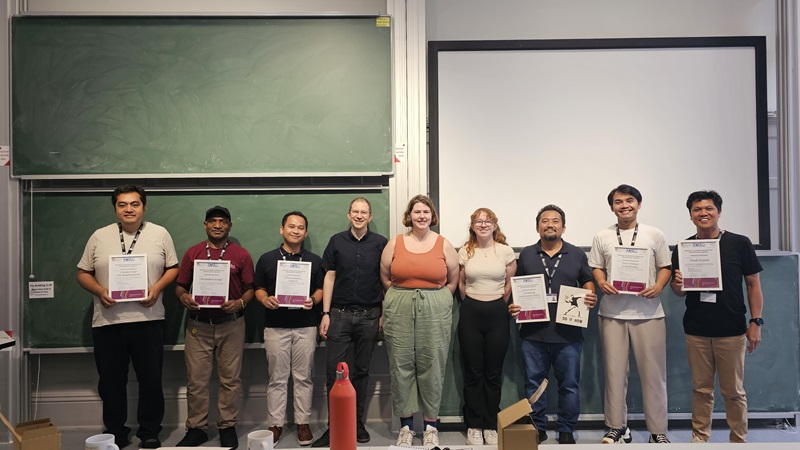Using figshare to publish thesis data: A brief story from Silvia Christina of the English Department, Udayana University
Silvia Christina, one of the undergraduate students at the English Department, Faculty of Humanities, Udayana University, uses the online repository figshare (https://figshare.com/) to publish her thesis data (see below) on the Corpus-based syntactic analyses of THAT-relative clause in the Corpus of Contemporary American English (COCA). She was introduced to figshare by her thesis associate supervisor, Gede Primahadi Wijaya Rajeg, Ph.D., who is also one of the figshare ambassadors in Indonesia (see Gede's figshare profile here) (Silvia’s main supervisor is Dr. I Made Netra). By publishing her data as open-access materials on figshare, Silvia adopts a state-of-the-art practice in modern science at large and provides alternative to the traditional style of plugging the data as long pages in the Appendices section of the thesis. In this post, Silvia shares her experiences and view (in an interview-like style) on using figshare as a research repository.
Christina, Silvia; Rajeg, Gede Primahadi Wijaya; Netra, I Made (2021): Datasets and figures for A Corpus-Based Syntactic Analysis of That-Relative Clause in the Corpus of Contemporary American English (COCA). figshare. Dataset. https://doi.org/10.6084/m9.figshare.14701392.v1
Q: Why do you decide to go with using figshare to deposit your thesis appendices?
I decided to use figshare to deposit my thesis appendices because I’m interested in the trend of open science practice. I think it’s a good thing to make your research findings freely, easily and quickly accessible to the public for many good reasons (e.g., it enables other researchers to check, verify, and re-use the findings, it helps researchers who are hampered by paywalls to find academic literatures).
Q: What is your impression when you first using figshare? Does the interface give you difficulty?
I honestly think it's an amazing and helpful online repository. I don’t find any great trouble with the interface as it’s simple, not confusing, and relatively easy to use.
Q: Is there any issue or question that you are still not clear of about figshare?
So far, I don’t have any issue or question regarding figshare.
Q: If you were to introduce/promote figshare to your collegue, what would be your rationale/reason to do that? What kind of benefit do you think your colleague or junior would get by using figshare?
1. It's free to create an account on figshare. Besides, they can also freely publish their own works which can be in the form of figure, media, dataset, poster, journal contribution, presentation, thesis, software, online resource, preprint, book, or conference contribution.
2. They can discover works by other researchers on figshare as well. It’s free and fast as they just have to type the keywords of works that they want to find.
3. It's relatively easy to use (i.e., easy to create the account, upload the files, publish the works and get the DOI, discover other research papers/findings that can be used as their reference). The Digital Object Identifier (DOI) is important so that our work can be cited properly.
4. It's cost- and space-saving because there is no need to print long pages of appendices anymore.
5. They can edit or update their data that they have uploaded and published on figshare.
6. They can get more exposure for their works.
We hope that other students in our department can follow in Silvia’s step in supporting open science and open data. As a note: Silvia's thesis examination is coming up on the 2nd of July 2021. All the best Silvia!
#figshare #opendata #openscience #corpusbasedsyntax #corpuslinguistics #quantitativecorpuslinguistics #udayanauniversity #englishdepartment #CorpusOfContemporaryAmericanEnglish




FACULTY OF HUMANITIES